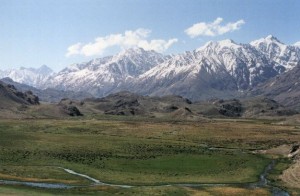 Pakistan, which is a magical blend of icy mountains, deep gorges, scenic valleys, mangrove forests and fertile plains, is dotted with colorful and vibrant cities that are any visitor’s delight. Its people are large-hearted and generous, and its history is rich and colorful.
Pakistan, which is a magical blend of icy mountains, deep gorges, scenic valleys, mangrove forests and fertile plains, is dotted with colorful and vibrant cities that are any visitor’s delight. Its people are large-hearted and generous, and its history is rich and colorful.
But it is Pakistan’s high and mighty mountains that are a dream come true for anyone who is interested in mountaineering, trekking, climbing, skiing or whitewater rafting. These mountains house the famous Marco Polo sheep, the black and brown Himalayan bear and the rare and beautiful snow leopard.
The entire terrain speaks of a raw and rugged beauty, which somehow has remained unspoilt by man. Some of the major tourist spots are the Roof of the World, Karakoram Pass, Gilgit Valley, Hunza Valley, Chitral valley and Garam chashma.
The Roof of the World, also known as Bam-e-duniya, is the Pamir plateau that crests six lofty mountain ranges. No one can stay unmoved or touched by the majestic beauty of this plateau. The Karokaram range has some of the largest glaciers outside of the Polar Regions in the world. A stirring sight is the slow-moving Baltura glacier, considered to be the seventh largest in the world.
The head of the Baltura glacier is crowned by some of the highest peaks in the world. They are the K-2 (8,611) second only to Everest, Broad Peak (8,047 metres) Gasherbrum-I (8,068 meters), and Gasherbrum-II (8,035 meters). Some of the other glaciers known for their beauty are the Siachen glacier, Hispar glacier and Biafo glacier.
The Hunza valley is situated on the ancient trade route to Sinkiang, now known as the Karakoram highway. The rugged beauty of this place and its clean air has earned it another name – the magical Shangri-la. A scenic and hospitable place, Chitral valley lies in the arms of the Hindukush Mountains. In Chitral you can visit the beautiful Shahi mosque and the fort of Chitral. The fort offers a panoramic view of the Tirch Mir Mountain of the Hindukush range with the Chitral River flowing nearby.
About 50 km from Chitral is Garam Chashma or hot sulphur springs whose water is said to have healing properties. You should also not miss out a drive to the Gilgit valley or a trip to Khyber Pass. Conquered by almost every great dynasty, the pass houses two beautiful forts Jamrud and Shagai.
Pakistan’s towns too are full of historical sights. Peshawar, which is situated at the mouth of the Khyber Pass, is the city of proud Pathans. Another town not to be missed is Lahore, commonly known as the cultural capital of Pakistan. Its famous landmarks are the Shalimar gardens, the Badshahi Mosque and the mausoleums of Emperor Jahangir and Empress Nur Jehan. The Minar-e-Pakistan, which was built to commemorate the resolution passed to create Pakistan, also adorns this city.
In Karachi, Pakistan’s largest city, the Masjid-e-toba or the defense mosque is worth seeing. The dome is a concrete shell having a diameter of 63.6m. The Mausoleum of Quaid-e-Azam, where the Father of the Nation, Muhammad Ali Jinnah, lies is made of white marble. Besides this, Karachi offers sun-filled beaches, deep-sea fishing and horse racing round the year.
In contrast to its historical cities, Pakistan’s capital, Islamabad, is a young, modern town. It was planned in 1960 and is made up of wide avenues, big houses and modern buildings. Its closeness to the Margalla Hills adds to its beauty. The city and its outskirts have several other spots that make it an ideal stop for tourists. These include: Rose and Jasmine Garden, Rawal Lake, Shah Faisal Mosque and Fatima Jinnah Park .
Credit
This is a guest post from Andrew Wang. Some of his blogs include Personal Finance, International Travel Medical Insurance, Reward Credit Card, Selling Time Share, and Orlando Vacation Homes.








